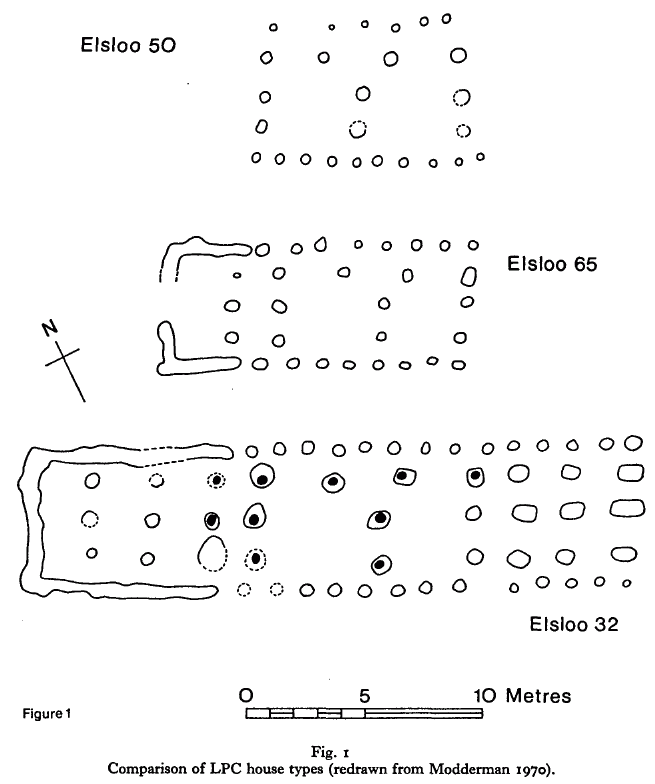Crossref Citations
This article has been cited by the following publications. This list is generated based on data provided by
Crossref.
Marshall, Alistair
1981.
Environmental adaptation and structural design in axially‐pitched longhouses from Neolithic Europe.
World Archaeology,
Vol. 13,
Issue. 1,
p.
101.
Inman, R.
Brown, D. R.
Goddard, R. E.
and
Spratt, D. A.
1985.
Roxby Iron Age Settlement and the Iron Age in North-East Yorkshire.
Proceedings of the Prehistoric Society,
Vol. 51,
Issue. 1,
p.
181.
Ammerman, Albert J.
Shaffer, Gary D.
and
Hartmann, Nicholas
1988.
A Neolithic Household at Piana di Curinga, Italy.
Journal of Field Archaeology,
Vol. 15,
Issue. 2,
p.
121.
Pollard, Joshua
1992.
The Sanctuary, Overton Hill, Wiltshire: A Re-examination.
Proceedings of the Prehistoric Society,
Vol. 58,
Issue. 1,
p.
213.
Tringham, Ruth
Brukner, Bogdan
Kaiser, Timothy
Borojević, Ksenija
Bukvić, Ljubomir
Šteli, Petar
Russell, Nerissa
Stevanović, Mirjana
and
Voytek, Barbara
1992.
Excavations at Opovo, 1985–1987: Socioeconomic Change in the Balkan Neolithic.
Journal of Field Archaeology,
Vol. 19,
Issue. 3,
p.
351.
Coudart, Anick
1993.
Le Néolithique du nord-est de la France et des régions limitrophes.
Forenbaher, Stašo
1994.
The Late Copper Age Architecture at Vučedol, Croatia.
Journal of Field Archaeology,
Vol. 21,
Issue. 3,
p.
307.
Gibson, Alex
Aldhouse-Green, S. H. R.
Brownsett, M.
Burl, H. A. W.
Debenham, N.
Hook, D.
Morgan, G. C.
Stead, S.
and
Vince, A.
1994.
Excavations at the Sarn-y-bryn-caled cursus complex, Welshpool, Powys, and the timber circles of Great Britain and Ireland.
Proceedings of the Prehistoric Society,
Vol. 60,
Issue. 1,
p.
143.
Shelley, Cameron
1996.
Visual Abductive Reasoning in Archaeology.
Philosophy of Science,
Vol. 63,
Issue. 2,
p.
278.
Stevanović, Mirjana
1997.
The Age of Clay: The Social Dynamics of House Destruction.
Journal of Anthropological Archaeology,
Vol. 16,
Issue. 4,
p.
334.
Kolb, Michael J.
and
Snead, James E.
1997.
It's a Small World after All: Comparative Analyses of Community Organization in Archaeology.
American Antiquity,
Vol. 62,
Issue. 4,
p.
609.
Coudart, Anick
1998.
Architecture et société néolithique.
Milisauskas, Sarunas
2001.
Encyclopedia of Prehistory.
p.
191.
Jennings, Nina
2002.
The Building of the Clay Dabbins of the Solway Plain: Materials and Man-Hours.
Vernacular Architecture,
Vol. 33,
Issue. 1,
p.
19.
Jennings, Nina
2002.
The Building of the Clay Dabbins of the Solway Plain: Materials and Man-Hours.
Vernacular Architecture,
Vol. 33,
Issue. 1,
p.
19.
Williams, Michael
2008.
A New Look at Global Forest Histories of Land Clearing.
Annual Review of Environment and Resources,
Vol. 33,
Issue. 1,
p.
345.
Williams, Michael
2008.
A New Look at Global Forest Histories of Land Clearing.
Annual Review of Environment and Resources,
Vol. 33,
Issue. 1,
p.
345.
Ruddiman, William F.
and
Ellis, Erle C.
2009.
Effect of per-capita land use changes on Holocene forest clearance and CO2 emissions.
Quaternary Science Reviews,
Vol. 28,
Issue. 27-28,
p.
3011.
Bickle, Penny
2013.
Tracking the Neolithic House in Europe.
p.
151.
Květina, Petr
and
Končelová, Markéta
2013.
Neolithic LBK Intrasite Settlement Patterns: A Case Study from Bylany (Czech Republic).
Journal of Archaeology,
Vol. 2013,
Issue. ,
p.
1.
